Table of contents
Using Types
Wednesday September 27, 2023-6 min readIntroduction
As you create records in each app, whether in Contacts, Leads, Documents, Parts, Inventory or any other type of information, it becomes increasingly important to have a way to organize that data. Appward uses Types as the first level of classifying your records into singular, distinct categories. Because the organization of your information dictates how you will understand and analyze it, management should take a thoughtful approach to defining the list of types use by the organization.
The list of types will vary across apps because it’s based on the focus of the app and depends on the most logical way to organize records for your business. The types list is usually established and locked in by management, and the type assigned to a record is generally enduring, meaning you won’t use it as a temporary designation. This is unlike Tags (Using Tags), where users can assign and create new tags as needed, assign multiple tags to a single record, and even use them as a temporary flag, such as Urgent.
Let’s go over an example to understand why types are important to you.
Contacts – Your contacts will typically consist of many people with whom you share different relationships. How can you keep all of these relationships organized? The answer – types. Here are some contact types that Appward uses:
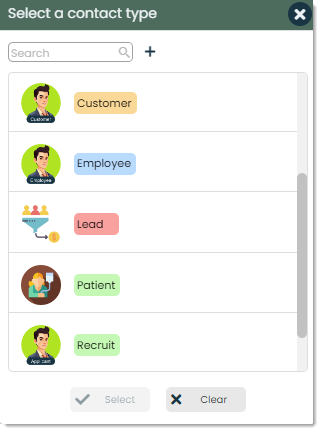
The important thing to note is that while Appward provides a default set of types in each application, you can create whatever types you want that make the most sense to your business. You can assign a specific type to each contact record, and if you wanted to see, for example, every contact that is an employee, you could go into the filter search and find every contact of type Employee.


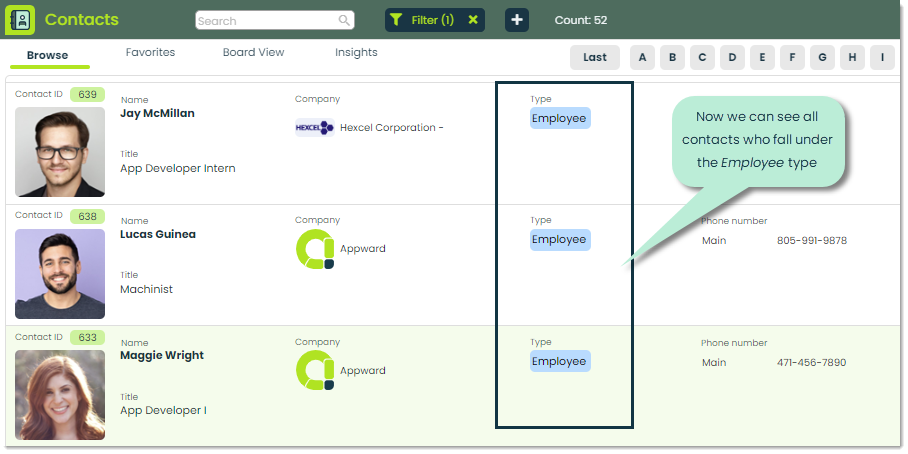
And with a simple filter, we are able to track records that fall under a specific category.
Let’s try adding our own type
Now that we understand how types can be used, let’s go through the process of adding one to a record. Depending on the app you’re in, you should see some sort of field for selecting a type. For example, when adding a new contact in Contacts, you’ll see a field for selecting a contact type:

This will bring up a popup for either selecting an existing type or creating a new one.
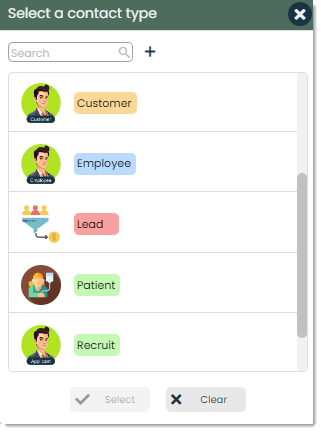
To add your own type, press the + button next to the search bar. After that, a screen will appear for customizing it. A type consists of a name, type image, backcolor and forecolor. Let’s go through each of these fields.
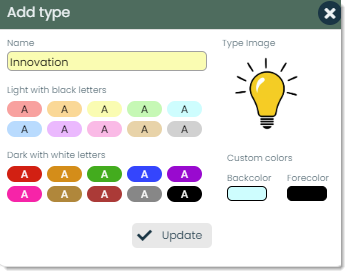
Name – It’s important to give your type a name that best describes its category.

Backcolor and Forecolor – Backcolor refers to the background color of the type label while forecolor refers to its text color. These colors help to provide maximum visibility when shown within a record. You can choose from Appward’s default type colors or select your own custom colors.
Default Colors
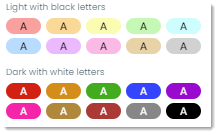
Customized Colors

To customize the type colors, select the icon under Backcolor or Forecolor to bring up the color picker. Here, you can use tools to control the shade, hue, transparency and opacity.
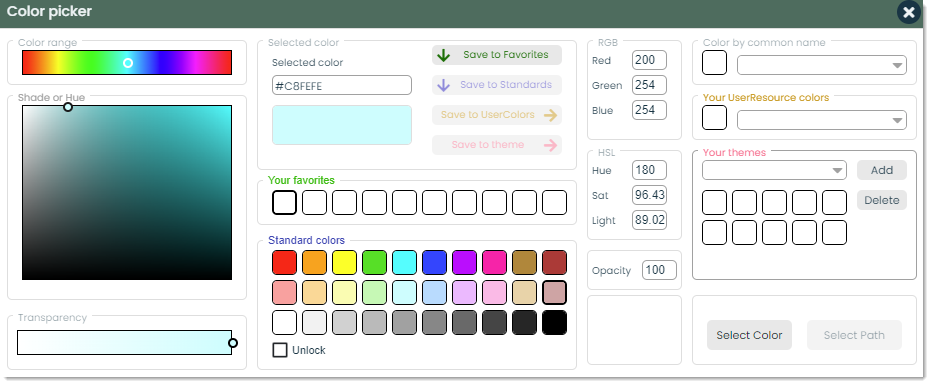
Type Image – Type Images provide you with a visual representation of the type and a default image to use for your record. Images can be selected from your computer, the Appward cloud or from pexels.com.

Once all of your selections have been made, you can assign that type to your record. And that’s it! Now, you’ll be able to track all the records that belong to that type through a simple filter search.
